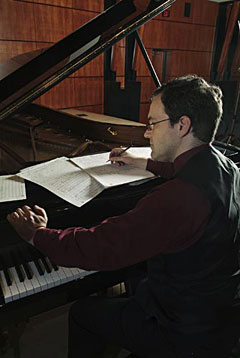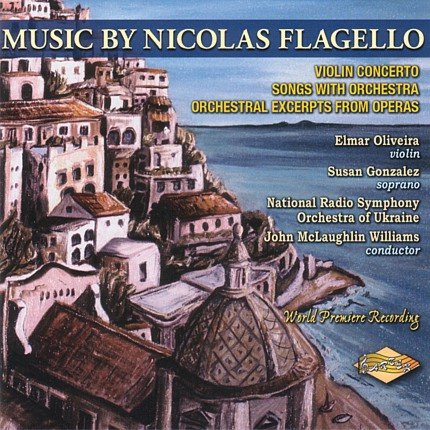Pierre-Laurent Aimard is music director for this year’s Ojai Music Festival, and his program for last night explored music in which the piano is used as a percussion instrument, while also continuing the use of multiple pianos begun last night. With Saturday morning set for his solo program, his work yesterday evening was as a colleague. The percussion group Nexus played in all three works of the program, as did his colleague Tamara Stefanovich on piano. For the past several months Stefanovich has been Aimard’s fellow-player of choice, having filled in for another pianist who suffered what sounds like tendon problems and had to withdraw on short notice from a program with Aimard. Once the partnership began, they obviously found that they could enjoy similar interpretations and motivations concerning important work.
The concert began with Bartok’s too-seldom-heard masterwork, Sonata for Two Pianos and Percussion (1937), a work written at the height of his musical and physical strengths. It’s a shame that without an orchestra or even a violin or two the work fits so poorly with most programming decisions. There are some pretty good recordings of this work still in print, but last night seemed an exceptionally good performance.
After a rearrangement of the stage, Peter Eötvös then came on stage to conduct his new Sonata per Sei (2006) for two pianos, sampler (played by Helena Bugallo from Bugallo-Williams) and three percussionists. In its first version the music was Concerto for Acoustic Piano, Keyboard and Orchestra, written for the 125th anniversary of Bartok’s birth. This revision, giving its U.S. premiere, makes the homage to Bartok (and to Bartok’s sonata) even more obvious. This is a chamber work that would probably benefit from a conductor, not merely to compensate for inadequate practice by the ensemble. The piano parts seem extremely difficult, and the work is full of rhythmic interactions. In fact it was fun to watch the faces of two of the percussionists who probably wouldn’t be good poker players: they beamed with pleasure at some of the piano and percussion riffs, even when they were just listening to the others in the group. The music is full of instrumental color, and it is easy on the ears but much harder to understand on first listening.
After intermission the Los Angeles Master Chorale, four vocal soloists and an additional piano came on stage for the most vibrant performance of Stravinsky’s les Noces (1913-1923) I have heard. Eötvös conducted, and the result emphasized the folksong origins of so much of the work. Everyone around me seemed as swept away by this performance as I was. It was one of those Ojai evenings in which everything seemed to click. Can you get four better pianists for the Stravinsky? Can another chorus to better than the Master Chorale? Is there a better percussion group than Nexus for something like this? And where did Tom Morris, the managing director of Ojai (formerely with Cleveland) find so appropriate soloists?
I should mention that it’s nice to find someone in an office job who still has some chops. The performance of the Stravinsky needed one more percussionist, on cymbals. Tom Morris made his Ojai debut as percussionist. Of course, as his bio shows, he had kept his hand in all along. It just shows that a Wharton MBA doesn’t overcome every other tendency. Word around the Festival is that Morris is extending his contract with Ojai for at least four more seasons. Based on how this festival is shaping up, that’s very good news for us.
 The
The 
 First Jeff Harrington, then David Salvage, and now our very own
First Jeff Harrington, then David Salvage, and now our very own  The Los Angeles Master Chorale gave the premiere of a new work by
The Los Angeles Master Chorale gave the premiere of a new work by  For the past 27 years, the Mexican-born pianist and composer
For the past 27 years, the Mexican-born pianist and composer  Music by Nicolas Flagello
Music by Nicolas Flagello
 Nostalghia – Song for Tarkovsky
Nostalghia – Song for Tarkovsky